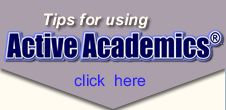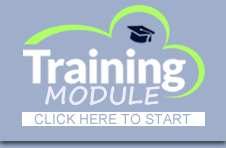
Physical Activity and School-age Children Related Research
Comprehensive School Physical Activity
Beaulieu, L., Butterfield, S.A., Mason, C.A., & Loovis, E.M. (2012). Physical activity and U.S. public elementary schools: Implications for our profession. ICHPER-SD Journal of Research, 7(1), 12-16.
Brusseau, T. A., Hannon, J., & Burns, R. (2016). The effect of a comprehensive school physical activity program on physical activity and health-related fitness in children from low-income families. Journal of Physical Activity & Health, 13, 888–894. doi:10.1123/jpah.2016-0028
Bruseeau, T. A., Hannon, J. C., Fu, Y., Fang, Y., Nam, K., Goodrum, S., & Burns, R. D. (2018). Trends in physical activity, health-related fitness, and gross motor skills in children during a two year comprehensive school physical activity program. Journal of Science and Medicine in Sport, 21, 828-832.
Burns, R. D., Brusseau, T. A., Fu, Y., Myrer, R. S., Hannon, J. C. (2016). Comprehensive school physical activity programming and classroom behavior. American Journal of Health Behavior, 40, 100-107. doi:10.5993/AJHB.40.1.11
Burns, R., Brusseau, T. A., & Hannon, J. (2017). Effect of comprehensive school physical activity programming on cardiometabolic health markers in children from low-income schools. Journal of Physical Activity and Health, 14, 671-676.
Castelli, D. M., Centeio, E. E., Beighle, A. E., Carson, R. L., & Nicksic, H. M. (2014). Physical literacy and comprehensive school physical activity programs. Preventive Medicine, 66, 95-100. doi:10.1016/j.ypmed.2014.06.007
Castelli, D. M., & Ward, K. (2012). Physical activity during the school day. Journal of Physical Education, Recreation & Dance, 83(6), 20-29. doi:10.1080/07303084.2012.10598791
Centeio, E., Erwin, H., & Castelli, D. (2014a). Comprehensive school physical activity programs: Characteristics of trained teachers. Journal of Teaching in Physical Education, 33(4), 492-510.
Centeio, E. E., Somers, C., McCaughtry, N., Shen, B., Gutuskey, L., Martin, J. J., Garn, A. C., & Kulik, N. L. (2014). Physical activity change through comprehensive school physical activity programs in urban elementary schools. Journal of Teaching in Physical Education, 33(4), 573–591. doi:10.1123/jtpe.2014-0067
Chen, S., & Gu, X. (2018). Toward active living: Comprehensive school physical activity program research and implications. Quest, 70(2), 191-212.
Elliot, E., Erwin, H., Hall, T., & Heidorn, B. (2013). Comprehensive school physical activity programs: Helping all students achieve 60 minutes of physical activity each day. Journal of Physical Education, Recreation & Dance, 84(9), 9-15. doi:10.1080/07303084.2013.838105
Erwin, H., Beighle, A., Carson, R. L., & Castelli, D. M. (2013). Comprehensive school-based physical activity promotion: A review. Quest, 65(4), 412–428. doi:10.1080/00336297.2013.791872
Fu, Y., Burns, R., Brusseau, T., & Hannon, J. (2016). Comprehensive school physical activity programming and activity enjoyment. American Journal of Health Behavior, 40(4), 496-502. doi:10.5993/AJHB.40.4.11
Institute of Medicine. (2013). Educating the student body: Taking physical activity and physical education to school. Washington, DC: National Academies Press.
Jones, E. M., Taliaferro, A. R., Elliott, E. M., Bulger, S., Kristjansson, A. L., Neal, W., & Allar, I. (2014). Feasibility study of comprehensive school physical activity programs in Appalachian communities: The McDowell CHOICES project. Journal of Teaching in Physical Education, 33 (4), 467-91. doi:10.1123/jtpe.2014-0065
Kohl, H. W., & Cook, H. D. (2013). Educating the student body: Taking physical activity and physical education to school. Washington, DC: National Academies Press.
Magnusson, K. T., Sigurgeirsson, I., Sveinsson, T., & Johannsson, E. (2011). Assessment of a two-year school-based physical activity intervention among 7-9-year-old children. International Journal of Behavioral Nutrition and Physical Activity, 8(1), 138.
Mavilidi, M. F., Ruiter, M., Schmidt, M., Okely, A. D., Loyens, S., Chandler, P., & Paas, F. (2018b). A narrative review of school-based physical activity for enhancing cognition and learning: The importance of relevancy and integration. Frontiers in Psychology, 9, 1-17.
Moore, J. B., Carson, R. L., Webster, C. A., Singletary, C. R., Castelli, D. M., Pate, R. R., Beets, M. W., & Beighle, A. (2018). The application of an implementation science framework to comprehensive school physical activity programs: Be a champion! Frontiers in Public Health, 5, 354.
National Association for Sport and Physical Education.( 2009). Comprehensive school physical activity programs. Reston, VA: NASPE.
National Association for Sport and Physical Education. (2008). Comprehensive school physical activity programs [Position statement]. Reston, VA: Beigle, A., Elliott, E., McKenzie, T., Woods, A. M.
Prigge, D. (2002). 20 ways to promote brain-based teaching and learning. Intervention in School and Clinic, 37(4), 237–41.
Rauschenbach, J. (1996). Tying it all together: Integrating physical education and other subject areas. Journal of Physical Education, Recreation and Dance 67(2), 49–51.
Russ, L. B., Webster, C. A., Beets, M. W., Egan, C., Weaver, R. G., Harvey, R., & Phillips, D. S. (2017). Development of the System for Observing Student Movement in Academic Routines and Transitions (SOSMART). Health Education & Behavior, 44(2), 304–315. doi:10.1177/1090198116657778
Russ, L. B., Webster, C. A., Beets, M. W., & Phillips, D. S. (2015). Systematic review and meta-analysis of multi-component interventions through schools to increase physical activity. Journal of Physical Activity and Health, 12, 1436-1446.
Strampel, C. M., Martin, L., Johnson, M. J., Iancu, H., Babineau, C., & Carpenter, J. G. (2014). Teacher perceived barriers and potential solutions to implementing daily physical activity in elementary schools. Physical & Health Education Journal, 80(1), 14-22.
U.S. Department of Health and Human Services, Centers for Disease Control and Prevention. (2013). Comprehensive school physical activity programs: A guide for schools. (CDC Publication No. CS242620-A). Retrieved from https://www.cdc.gov/healthyschools/physi calactivity/pdf/13_242620A_CSPAP_SchoolPhysActivityPrograms_Final_508_12192013.pdf
Physical Activity in Classrooms
Bartholomew, J. B., & Jowers, E. M. (2011). Physically active academic lessons in elementary children. Preventive Medicine, 52, S51-S54. doi:10.1016/j.ypmed.2011.01.017
Carlson, J., Engelberg, J., Cain, K., Conway, T., Mignano, A., Bonilla, E., Geremia, C., & Sallis, J. (2015). Implementing classroom physical activity breaks: Associations with student physical activity and classroom behavior. Preventive Medicine, 81, 67-72. doi:10.1016/j.ypmed.2015.08.006
Cothran, D. J., Kulinna, P. H., & Garn, A. C. (2010). Classroom teachers and physical activity integration. Teaching and Teacher Education, 26(7), 1381-1388.
Donnelly, J. E., & Lambourne, K. (2011). Classroom-based physical activity, cognition, and academic achievement. Preventive Medicine, 52, S36-S42.
Delk, J., Springer, A. E., Kelder, S. H., & Grayless, M. (2014). Promoting teacher adoption of physical activity breaks in the classroom: Findings of the Central Texas CATCH Middle School Project. Journal of School Health, 84(11), 722-730.
Dyrstad, S. M., Kvalø, S. E., Alstveit, M., & Skage, I. (2018). Physically active academic lessons: Acceptance, barriers and facilitators for implementation. BMC Public Health, 18(1), 1-11.
Erwin, H. E., Beighle, A., Morgan, C. F., & Noland, M. (2011). Effect of a low-cost, teacher-directed classroom intervention on elementary students' physical activity. Journal of School Health, 81(8), 455-461. doi:10.1111/j.1746-1561.2011.00614.x.
Fingon, J.( 2011). Integrating children's books and literacy into physical education curriculum. Strategies 24 (4):12-40.
Goh, T. L., Hannon, J. C., Brusseau, T. A., Webster, C., Podlog, L., & Newton, M. (2014a). Effects of a classroom based physical activity program on children’s physical activity levels. Journal of Teaching in Physical Education, 33(4), 558-572. doi:10.1123/jtpe.2014-0068
Goh, T. L., Hannon, J. C., Webster, C. A., & Podlog, L. (2017). Classroom teachers’ experiences implementing a movement integration program: Barriers, facilitators, and continuance. Teaching and Teacher Education, 66, 88-95. doi:10.1016/j.tate.2017.04.003
Have, M., Nielsen, J. H., Ernst, M. T., Gejl, A. K., Fredens, K., Grøntved, A., & Kristensen, P. (2018). Classroom-based physical activity improves children’s math achievement – A randomized controlled trial. Plos One, 13(12), 1-14.
Jensen, E. (2000). Learning with the body in mind. San Diego, CA: The Brain Store.
Ma, J. K., Mare, L. L., & Gurd, B. J. (2014). Classroom-based high-intensity interval activity improves off-task behaviour in primary school students. Applied Physiology, Nutrition & Metabolism, 39(12), 1332–1337.
Machamer, A. E., (2019). Movement in the classroom: Contingent factors underlying teacher change (Doctoral dissertation). Graduate Theses, Dissertations, and Problem Reports. 4047. Retrieved from https://researchrepository.wvu.edu/etd/4047
Mahar, M. T., Murphy, S. K., Rowe, D. A., Golden, J., Shields, A. T., & Raedeke, T. D. (2006). Effects of a classroom-based program on physical activity and on-task behavior. Medicine and Science in Sports and Exercise, 38(12), 2086–2094. doi:10.1249/01.mss.0000235359.16685.a3
Manross, M. [Developer]. PE Central [Online]. Blacksburg, VA. World Wide Web: http://www.pecentral.org
McCracken, B. (2001). It's not just a gym anymore. Champaign, IL: Human Kinetics.
McMullen, J., Kulinna, P., & Cothran, D. (2014). Physical activity opportunities during the school day: Classroom teachers’ perceptions of using activity breaks in the classroom. Journal of Teaching in Physical Education, 33(4), 511-27. doi:10.1123/jtpe.2014-0062
Roberts, P., & R.Kellough. (2006). A guide for developing interdisciplinary thematic units. Upper Saddle River, NJ: Prentice Hall.
Vazou, S., & Smiley-Oyen, A. L. (2014). Moving and academic learning are not antagonists: Acute effects on executive function and enjoyment. Journal of Sport and Exercise Psychology, 36, 474-485. doi: 10.1123/jsep.2014-0035
Webster, C. A., Russ, L., Vazou, S., Goh, T. L., & Erwin, H. (2015). Integrating movement in academic classrooms: Understanding, applying and advancing the knowledge base. Obesity Reviews, 16(8), 691– 701. https://doi.org/10.1111/obr.12285
Physical Activity and Academic Performance
Basch, C.E. (2010). Healthier students are better learners: A missing link in efforts to close the achievement gap. Equity Matters: Research Review No. 6. Retrieved on March 22, 2013, from http://www.equitycampaign.org.
Basch, C. E. (2011). Physical activity and the achievement gap among urban minority youth. Journal of School Health, 81(10), 626–634. https://doi.org/10.1111/j.1746-1561.2011.00637.x
Budde, H., Voelcker-Rehage, C., Pietraßyk-Kendziorra, S., Ribeiro, P., & Tidow, G. (2008). Acute coordinative exercise improves attentional performance in adolescents. Neuroscience Letters, 441(2), 219–223. https://doi.org/10.1016/j.neulet.2008.06.024
Carlson, S. A., Fulton, J. E., Lee, S. M., Maynard, L. M., Brown, D. R., Kohl III, H. W., & Dietz, W. H. (2008). Physical education and academic achievement in elementary school: Data from the early childhood longitudinal study. American Journal of Public Health, 98(4), 721-727.
Castelli, D. M ., Erwin, H., Buck, S. M ., & Hillman, C. H. (2006). The relationship between motor skill competency and cognitive processes in children. Research Quarterly for Exercise and Sport, 77(1), 51.
Castelli, D. M., & Hillman, C. H. (2007). Physical education performance outcomes and cognitive function. Strategies: A Journal for Physical and Sport Educators, 21(1), 26–30.
Castelli, D. M., Hillman, C. H., Buck, S. M., & Erwin, H. E. (2007). Physical fitness and academic achievement in third-and fifth-grade students. Journal of Sport and Exercise Psychology, 29(2), 239-252.
Centers for Disease Control and Prevention. (2010). The association between school-based physical activity, including physical education, and academic performance. U.S. Department of Health and Human Services. http://www.cdc.gov/HealthyYouth/health_and_academics/index.htm
Centers for Disease Control and Prevention. (2014). Health and academic achievement. U.S. Department of Health and Human Services. https://www.cdc.gov/healthyyouth/health_and_academics/pdf/health-academic-achievement.pdf
Chomitz, V., Slining, M., McGowan, R., Mitchell, S., Dawson, G., Hacker, K. (2009). Is there a relationship between physical fitness and academic achievement? Positive Results From Public School Children in the Northeastern United States. Journal of School Health, 79: 30-37.
Coe, D. P., Pivarnik, J. M., Womack, C. J., Reeves, M. J., & Malina, R. M. (2006). Effect of physical education and activity levels on academic achievement in children. Medicine and Science in Sports and Exercise, 38(8), 1515-1519. doi:10.1249/01.mss.0000227537.13175.1b
Daley, A. J., &. Ryan, J. (200l). Academic performance and participation in physical activity by secondary school adolescents. Perceptual Motor Skill, 91(2), 245-248.
Donnelly, J. E., Hillman, C. H., Castelli, D., Etnier, J. L., Lee, S., Tomporowski, P., Lambourne, K., & Szabo-Reed, A. N. (2016). Physical activity, fitness, cognitive function, and academic achievement in children: A systematic review. Medicine and Science in Sports and Exercise, 48(6), 1197–1222. https://doi.org/10.1249/MSS.0000000000000901
Donnelly, J. E., & Lambourne, K. (2011). Classroom-based physical activity, cognition, and academic achievement. Preventive Medicine, 52, S36-S42. doi:10.1016/j.ypmed.2011.01.021
Dwyer, T., Sallis, J. F., Blizzard, L., Lazarus, R., & Dean, K. (2001). Relation of academic performance to physical activity and fitness in children. Pediatric Exercise Science, 13(3), 225-237.
Ericsson, I. (2008). Motor skills, attention and academic achievement: An intervention study in school years 1-3. British Educational Research Journal, 34(3), 301-313.
Erwin, H., Fedewa, A., & Ahn, S. (2017). Student academic performance outcomes of a classroom physical activity intervention: A pilot study. International Electronic Journal of Elementary Education, 4(3), 473-487.
Fedewa, A. L., & Ahn, S. (2011). The effects of physical activity and physical fitness on children’s achievement and cognitive outcomes: A meta-analysis. Research Quarterly for Exercise & Sport, 82(3), 521–535.
Fedewa, A., Davis, M. A. C., & Ahn, S. (2015). Effects of stability balls on children's on-task behavior, academic achievement, and discipline referrals: A randomized controlled trial. The American Journal of Occupational Therapy: Official Publication of the American Occupational Therapy Association, 69(2), 1- 9.
Field, T., Diego, M ., &. Sanders, C. E. (2001) . Exercise is positively related to adolescents' relationships and academics. Adolescence, 36(141), 106-110.
Grieco, L. A., Jowers, E. M., & Bartholomew, J. B. (2009). Physically active academic lessons and time on task- the moderating effect of body mass index. Medicine and Science in Sports and Exercise, 41(10), 1921-1926. doi:10.1249/mss.0b013e3181a61495
Hillman, C. H., Pontifex, M. B., Raine, L. B., Castelli, D. M., Hall, E. E., & Kramer, A. F. (2009). The effect of acute treadmill walking on cognitive control and academic achievement in preadolescent children. Neuroscience, 159(3), 1044-1054. https://doi.org/10.1016/j.neuroscience.2009.01.057
Keeley, T. J. H., & Fox, K. R. (2009). The impact of physical activity and fitness on academic achievement and cognitive performance in children. International Review of Sport & Exercise Psychology, 2(2), 198–214.
Kibbe, D. L., Hackett, J., Hurley, M., McFarland, A., Schubert, K. G., Schultz, A., & Harris, S. (2011). Ten Years of TAKE 10!®: Integrating physical activity with academic concepts in elementary school classrooms. Preventive medicine, 52, S43-S50.
Kim, S.-Y., & So, W.-Y. (2012). The relationship between school performance and the number of physical education classes attended by Korean adolescent students. Journal of Sports Science & Medicine, 11(2), 226–230.
Michael, S. L., Merlo, C. L., Basch, C. E., Wentzel, K. R., & Wechsler, H. (2015). Critical connections: Health and academics. Journal of School Health, 85(11), 740–758. https://doi.org/10.1111/josh.12309
Mullender-Wijnsma, M. J., Hartman, E., de Greeff, J. W., Bosker, R. J., Doolaard, S., & Visscher, C. (2015). Improving academic performance of school-age children by physical activity in the classroom: 1-year program evaluation. Journal of School Health, 85(6), 365-371.
Phillips, D., Hannon, J. C., & Castelli, D. M. (2015). Effects of vigorous intensity physical activity on mathematics test performance. Journal of Teaching in Physical Education, 34(3), 346-362. doi:10.1123/jtpe.2014-0030
Rasberry, C. N., Lee, S. M., Robin, L., Laris, B. A., Russell, L. A., Coyle, K. K., & Nihiser, A. J. (2011). The association between school-based physical activity, including physical education, and academic performance: A systematic review of the literature. Preventive medicine, 52, S10-S20.
Reed, J. A., Einstein, G., Hahn, E., Hooker, S. P., Gross, V. P., & Kravitz, J. (2010). Examining the impact of integrating physical activity on fluid intelligence and academic performance in an elementary school setting: A preliminary investigation. Journal of Physical Activity and Health, 7(3), 343-351. doi:10.1123/jpah.7.3.343
Sallis, J., McKenzie, T., Kolody, B., Lewis, M., Marshall, S., and Rosengard, P. (1999) Effects of health-related physical education on academic achievement: Project SPARK. Research Quarterly for Exercise and Sport, 70(2), 127–34.
Singh, A., Uijtdewilligen, L., Twisk, J. W. R., Mechelen, W. van, & Chinapaw, M. J. M. (2012). Physical activity and performance at school: A systematic review of the literature including a methodological quality assessment. Archives of Pediatrics & Adolescent Medicine, 166(1), 49–55. https://doi.org/10.1001/archpediatrics.2011.716
Taras, H. (2005). Physical activity and student performance at school. Journal of School Health, 75(6), 214-218.
Tremblay, M. S., Inman, J. W., & Willms, J. D. (2000). The relationship between physical activity, self-esteem, and academic achievement in 12-year-old children. Pediatric Exercise Science, 12(3), 312-323.
Trost, S. G. (2008). Physical education, physical activity, and academic performance in youth. Chronicle of Kinesiology & Physical Education in Higher Education, 19(3), 33–40.
Trost S. (2009). Active education: Physical education, physical activity and academic performance. A Research Brief. Princeton, NJ: Active Living Research, a National Program of the Robert Wood Johnson Foundation. Retrieved on March 20, 2013 from http://www.activelivingresearch.org.
Trudeau, F., & Shephard, R. J. (2008). Physical education, school physical activity, school sports and academic performance. International Journal of Behavioral Nutrition & Physical Activity, 5, 1–12. https://doi.org/10.1186/1479-5868-5-10
US Department of Health and Human Services, Centers for Disease Control and Prevention. (2010). The association between school-based physical activity, including physical education, and academic performance. Atlanta, GA: USDHHS CDC.
Welk, G. J., Jackson, A. W., Morrow, J. R., Haskell, W. H., Meredith, M. D., & Cooper, K. H. (2010). The association of health-related fitness with indicators of academic performance in Texas schools. Research Quarterly for Exercise and Sport, 81(Suppl. 2), 16-23.
Physical Activity and Health/Mental Health Outcomes
Ahn, S., & Fedewa, A. L. (2011). A meta-analysis of the relationship between children’s physical activity and mental health. Journal of Pediatric Psychology, 36(4), 385–397. https://doi.org/10.1093/jpepsy/jsq107
American Academy of Pediatrics Policy Statement. (2006). Active healthy living: Prevention of childhood obesity through increased physical activity. Pediatrics, 117(5), 1834 -1842. https://pediatrics-aappublications-org.www.libproxy.wvu.edu/content/117/5/1834.full
Bailey, R. P., Howells, K., & Glibo, I. (2018). Physical activity and mental health of school-aged children and adolescents: a rapid review. International Journal of Physical Education, 55(1), 2–14.
Biddle, S. J., & Asare, M. (2011). Physical activity and mental health in children and adolescents: A review of reviews. British Journal of Sports Medicine, 45(11), 886–95. https://doi.org/10.1136/bjsports-2011-090185
Biddle, S. J. H., Ciaccioni, S., Thomas, G., & Vergeer, I. (2019). Physical activity and mental health in children and adolescents: An updated review of reviews and an analysis of causality. Psychology of Sport & Exercise, 42, 146–155. https://doi.org/10.1016/j.psychsport.2018.08.011
Centers for Disease Control and Prevention. (2011). School health guidelines to promote healthy eating and physical activity. MMWR 60(RR-5):28-33.
Dale, L. P., Vanderloo, L., Moore, S., & Faulkner, G. (2019). Physical activity and depression, anxiety, and self-esteem in children and youth: An umbrella systematic review. Mental Health and Physical Activity, 16, 66–79. https://doi.org/10.1016/j.mhpa.2018.12.001
Glickman, D., Parker, L., Sim, L., Cook, H., & Miller, E. (Eds.). (2012). Accelerating progress in obesity prevention: Solving the weight of the nation. National Academies Press. https://ebookcentral.proquest.com/lib/wvu/detail.action?docID=3378977
Hannaford, C. (1995). Smart moves. Alexander, NC: Great Ocean Publishers.
Hillman, C. H., Castelli, D., & Buck, S. M . (2005). Aerobic fitness and cognitive function in healthy preadolescent children. Medicine and Science in Sports and Exercise, 37(11), 1967-1974.
Hillman, C. H., Pontifex, M. B., Castelli, D. M., Khan, N. A., Raine, L. B., Scudder, M. R., et al. (2014). Effects of the FITKids randomized controlled trial on executive control and brain function. Pediatrics 134, e1063-e1071. doi: 10.1542/peds.2013-3219
Meyer, A. L., & Gullotta, T. P. (2012). Physical activity across the lifespan: Prevention and treatment for health and well-being. Springer. https://doi.org/10.1007/978-1-4614-3606-5
Ratey, J. (2008). Spark: The revolutionary new science of exercise and the brain. With E. Hagerman. New York: Little, Brown.
Sibley, B. A., & Etnier, J. L. (2003). The relationship between physical activity and cognition in children: A meta-analysis. Pediatric Exercise Science, 15(3), 243–256.
Stevens-Smith, D. A. (2016) Active bodies/active brains: Practical applications using physical engagement to enhance brain development. Strategies, 29(6), 3-7. doi: 10.1080/08924562.2016.1231096
Strong, W., Malina, R., Blimkie, C., Daniels, S., Dishman, R., Gutin, B., et al.(2005). Evidence based physical activity for school-age youth. The Journal of Pediatrics, 146(6), 732-737.
Tomporowski, P.D. (2003). Cognitive and behavioral responses to acute exercise in youths: A review. Pediatric Exercise Science, 15(4), 348–359.
US Department of Health and Human Services. (2008). Physical Activity Guidelines for Americans. Washington, DC: US Department of Health and Human Services. [Available online at: http://www.health.gov/paguidelines].
US Department of Health and Human Services. (2012). Physical Activity Guidelines for Americans Midcourse Report Subcommittee of the President’s Council on Fitness, Sports & Nutrition. Physical Activity Guidelines for Americans Midcourse Report: Strategies to Increase Physical Activity Among Youth. Washington, DC: U.S.
US White House Task Force on Childhood Obesity. (2010). Solving the problem of childhood obesity within a generation: White House Task Force on Childhood Obesity Report to the President. [Washington, D.C.] : Executive Office of the President of the United States.
Zhu, X., Haegele, J. A., & Healy, S. (2019). Movement and mental health: Behavioral correlates of anxiety and depression among children of 6-17 years old in the U.S. Mental Health and Physical Activity, 16, 60–65. https://doi.org/10.1016/j.mhpa.2019.04.002
Physical Activity and Professional Development
Desimone, L.M. (2009). Improving impact studies of teachers’ professional development: Toward better conceptualizations and measures. Educational Researcher, 3(38), 181–199. doi:10.3102/0013189X08331140
Desimone, L.M. (2011). A primer on effective professional development. Kappan, 92(6), 68–71. doi:10.1177/003172171109200616
Martin, J. J., Mccaughtry, N., Hodges-Kulinna, P., & Cothran, D. (2008). The influences of professional development on teachers' self-efficacy toward educational change. Physical Education and Sport Pedagogy, 13(2), 171-190.
McCaughtry, N., Martin, J., Hodges Kulinna, P., & Cothran, D. (2006). What makes teacher professional development work? The influence of instructional resources on change in physical education. Journal of In-Service Education, 32(2), 221-235.
Physical Activity and Risk Behaviors
Brellenthin, A. G., & Lee, D. (2018). Physical activity and the development of substance use disorders: Current knowledge and future directions. Progress in Preventive Medicine, 3(3), 1-7.
Lebron, C., Stoutenberg, M., Janowsky, M., Asfour, L., Huang, S., & Prado, G. (2017). The role of physical activity and sedentary behavior in substance use and risky sex behaviors in Hispanic adolescents. The Journal of Early Adolescence, 37(7), 910-924.














